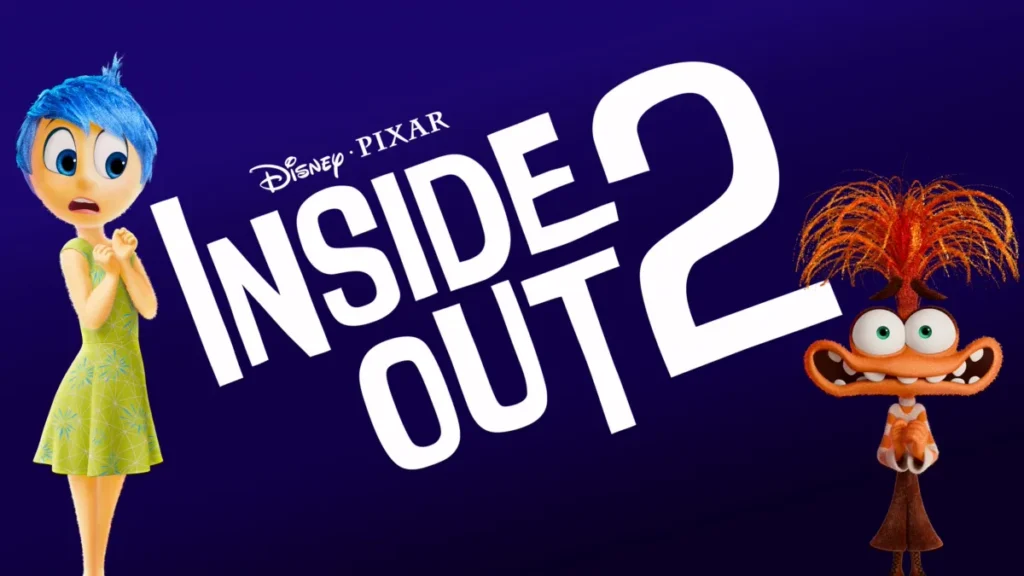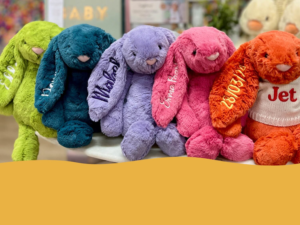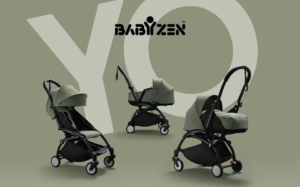
Inside Out 2
Introduction: Inside Out’s Legacy and Anticipation for the Sequel
Inside Out 2 (2015) was a cinematic milestone, a film that explored the complex emotional landscapes of growing up, capturing the essence of human emotions in a way never seen before. Its unique approach to storytelling, combined with Pixar’s signature animation style, made it an instant classic. Fans and critics alike were deeply moved by the film’s creative exploration of emotions, leaving audiences eager for more. With the announcement of Inside Out 2, expectations have reached an all-time high. But what can we expect from this highly anticipated sequel?
In this article, we’ll delve into what Inside Out 2 could bring to the table. We’ll explore the possible plotlines, character arcs, thematic explorations, and how it may expand on the emotional intricacies of the original. Buckle up, because we’re about to dive deep into the mind of this sequel.
1. Recap of Inside Out: What Made the First Movie So Special?

Before we dive into the sequel, it’s important to reflect on why Inside Out became such a groundbreaking movie. Released in 2015, it was more than just another animated film. It brought to life the inner workings of a young girl’s mind, giving personalities to her core emotions: Joy, Sadness, Fear, Anger, and Disgust. These personifications of emotions worked together—or at times against each other—to navigate the ups and downs of Riley’s life as she faced major changes like moving to a new city.
One of the things that made Inside Out so special was how it tackled the complex subject of mental health and emotional well-being in a way that was accessible to both children and adults. It didn’t shy away from the difficult emotions, like sadness or fear, that are often pushed aside in favor of joy. Instead, it embraced the idea that all emotions are necessary and valuable.
The film’s emotional depth was matched by its creative visuals. The world inside Riley’s mind was an imaginative playground, filled with memory orbs, a control panel for her emotions, and even an abstract thought room. This creative approach allowed audiences to visualize emotions in a completely new way, making abstract concepts tangible and relatable.
2. Inside Out 2: What We Know So Far
Pixar has kept many details about Inside Out 2 under wraps, but some key information has been confirmed. The sequel is set to pick up where the first film left off, following Riley as she enters her teenage years. This stage of life introduces a whole new set of emotions and challenges, and the film will likely explore how her existing emotions—Joy, Sadness, Fear, Anger, and Disgust—adapt to these changes.
One confirmed detail is the introduction of new emotions. In the first movie, we saw only five, but as anyone who’s lived through adolescence knows, emotions become more complicated during this time. While the filmmakers have yet to reveal which new emotions will make an appearance, fans are speculating that characters representing emotions like embarrassment, jealousy, or even guilt could join the cast.
It’s also been confirmed that Amy Poehler will return as the voice of Joy, with several other original cast members reprising their roles. The inclusion of new emotions may also mean new voice actors joining the ensemble, adding more star power to an already stellar cast. Beyond these few details, though, much of the plot is still a mystery. However, given the emotional complexity of adolescence, there’s no doubt that Inside Out 2 will have plenty of material to explore.
3. Expanding the Emotional Landscape: New Emotions in Inside Out 2
One of the most exciting aspects of Inside Out 2 is the possibility of introducing new emotions. The original film focused on five core emotions, but as Riley grows up, her emotional experience is bound to become more nuanced. This opens the door for the sequel to introduce new emotional characters who could bring additional layers to the story.
Teenage years are known for emotional turbulence, and emotions like embarrassment, guilt, pride, jealousy, and even loneliness may take center stage. Each of these emotions could be personified in the same imaginative way as the original five, providing unique perspectives on Riley’s life as she navigates the challenges of adolescence.
For instance, a character representing embarrassment might pop up frequently during awkward social situations, while guilt could play a role when Riley faces moral dilemmas. Each of these new emotions would need to find their place in the already crowded “headquarters” of Riley’s mind, potentially leading to conflicts or alliances with the existing emotions. How these new emotions interact with Joy, Sadness, Fear, Anger, and Disgust will likely be a major source of both humor and emotional depth in the film.
4. Riley’s Teen Years: New Challenges, New Emotional Struggles
The teenage years are a notoriously difficult time, filled with hormonal changes, identity crises, and emotional upheaval. For Riley, who was 11 years old in the first movie, adolescence will bring a whole new set of challenges. Whether it’s dealing with friendships, romantic interests, school stress, or conflicts with parents, the sequel has plenty of material to draw from.
In Inside Out, the conflict centered around Riley’s struggle to adjust to a big life change—moving to a new city and leaving behind her friends and familiar surroundings. In Inside Out 2, these struggles are likely to be more internal. As Riley matures, her emotions will have to contend with more complex situations that don’t always have clear solutions. This could lead to more nuanced emotional storytelling, as Joy and the other emotions work together (or clash) to help Riley navigate the ups and downs of being a teenager.
One potential storyline could revolve around Riley’s quest for independence. Teenagers often struggle to assert their autonomy, and this could create tension between Riley and her parents, as well as between the emotions themselves. How will Joy, who is used to being in control, react to situations where Riley feels embarrassed or ashamed? Will Sadness take on a more prominent role, given that adolescence is often marked by feelings of loneliness or isolation? These are just some of the questions that Inside Out 2 may explore.
5. Character Development: Growth of the Core Emotions
In the original Inside Out, each of Riley’s core emotions experienced growth and development, particularly Joy and Sadness. By the end of the film, Joy learned that Sadness wasn’t something to be avoided or suppressed, but a vital part of emotional well-being. This character arc was one of the most powerful aspects of the movie, showing that joy and sadness can coexist and that all emotions have value.
In Inside Out 2, the emotions themselves will likely continue to evolve. As Riley grows up, her emotions will need to adapt to her changing experiences. Joy, who was the dominant emotion in the first film, may find herself struggling to maintain control as Riley faces more complex emotions. Sadness, who played a more central role in the first film, could take on new responsibilities, helping Riley process the difficulties of adolescence.
The other emotions—Fear, Anger, and Disgust—may also experience growth. Fear, for example, could become more nuanced, evolving from a simple protector to someone who helps Riley navigate the social pressures of high school. Anger might take on a different role, helping Riley stand up for herself when necessary, while Disgust could become more relevant as Riley becomes more concerned with her social standing and peer relationships.
6. The Role of Family and Friends: External Influences on Riley’s Emotions
While Inside Out primarily focused on Riley’s internal emotional landscape, the sequel will likely expand on the external influences that shape her emotions. Adolescence is a time when relationships with family and friends become increasingly important, and these relationships will undoubtedly impact Riley’s emotional state.
Her relationship with her parents, which was central to the first film, may become more strained as Riley seeks independence. This could lead to new emotional conflicts, as her parents struggle to understand the changes she’s going through. On the flip side, Riley’s friends will also play a bigger role in her emotional development. Friendships can be a source of great joy but also deep sadness, especially during the teenage years when social dynamics are constantly shifting.
Romantic relationships may also be explored in Inside Out 2, adding another layer of emotional complexity. First crushes, heartbreak, and the excitement of new relationships could introduce new emotional challenges for Riley and her internal emotions to navigate. How Joy, Sadness, and the others react to these situations will provide plenty of opportunities for both humor and heartache.
7. Mental Health and Emotional Intelligence: A Deeper Dive
One of the most groundbreaking aspects of Inside Out was its thoughtful exploration of mental health and emotional intelligence. The film didn’t shy away from showing that all emotions—even the difficult ones—are important and have their place. In Inside Out 2, this theme will likely be expanded, particularly as Riley enters adolescence, a time when mental health issues often come to the forefront.
Adolescence is a time when many young people begin to struggle with issues like anxiety, depression, and self-doubt. By personifying Riley’s emotions, the film has a unique opportunity to explore these challenges in a way that is accessible to viewers of all ages. It could show how emotions like Fear and Sadness play a role in these struggles, while also highlighting the importance of seeking help and building emotional resilience.
The film may also explore the concept of emotional intelligence more deeply. In the first movie, Riley learned the importance of acknowledging and embracing all of her emotions. In the sequel, she may take this lesson further, learning how to regulate her emotions and use them to navigate difficult situations. This could provide a valuable message for young viewers, helping them understand that emotional intelligence is a key part of growing up.
8. Visual Innovations: What Could Pixar Bring to the Table?
Pixar is known for pushing the boundaries of animation, and Inside Out was no exception. The film’s depiction of the inner workings of the mind was visually stunning, from the glowing memory orbs to the abstract thought sequences. In Inside Out 2, Pixar will likely take this visual creativity to the next level.
One possibility is that the sequel will introduce new “worlds” within Riley’s mind to reflect the changes she’s going through. For example, adolescence is a time when abstract thinking becomes more prominent, so we may see more sequences that play with abstract concepts like identity, self-perception, or even the passage of time. The visual representation of these ideas could be a major highlight of the film.
Another area where Pixar could innovate is in the depiction of the new emotions. Each of the core emotions in the original film had a distinct look and color scheme, and the new emotions will likely follow suit. However, Pixar could take this a step further by giving the new emotions more complex designs to reflect their more nuanced nature. For instance, an emotion like guilt could have a shifting, shadowy appearance, while pride might be depicted as larger-than-life or overly colorful.
9. The Importance of Representation: A Broader Appeal
One of the strengths of Inside Out was its universal appeal. While the story was centered on a young girl, its themes were relatable to audiences of all ages. In Inside Out 2, Pixar has the opportunity to broaden its appeal even further by including more diverse experiences and perspectives.
Adolescence is a time when many young people begin to explore their identities, and Inside Out 2 could reflect this by including more diverse characters and storylines. This could include characters from different cultural backgrounds, as well as those who identify with different genders or sexual orientations. By doing so, the film could provide representation for a wider range of viewers, helping them see their own experiences reflected on screen.
Additionally, the film could explore how different cultural perspectives shape emotional experiences. Emotions are often influenced by cultural norms and expectations, and Inside Out 2 could provide a deeper exploration of this idea. For example, Riley’s family may have their own cultural traditions that influence how they express and deal with emotions, providing an interesting contrast to the more universal themes of the first film.
10. Expectations and Predictions: What Will Inside Out 2 Deliver?
As with any highly anticipated sequel, expectations for Inside Out 2 are sky-high. Fans of the original are hoping for a film that recaptures the emotional depth, creativity, and heart that made Inside Out such a beloved classic. But what exactly can we expect from the sequel?
Based on what we know so far, it’s safe to say that Inside Out 2 will continue to explore the complexities of emotions in a way that is both entertaining and thought-provoking. The introduction of new emotions and the challenges of adolescence will provide plenty of material for the filmmakers to work with. And given Pixar’s track record, we can expect the film to push the boundaries of both animation and storytelling.
At the same time, Inside Out 2 will need to strike a delicate balance. The original film was praised for its emotional honesty and relatability, and the sequel will need to maintain this authenticity while also introducing new elements. If done right, Inside Out 2 has the potential to be not only a worthy successor but also a film that stands on its own as a powerful exploration of the emotional journey of growing up.
Conclusion: Inside Out 2 – A Sequel Worth the Wait?
With so much anticipation surrounding Inside Out 2, it’s clear that fans have high hopes for this sequel. The original film set a high bar, but if Pixar can deliver on the promise of new emotions, deeper character development, and a thoughtful exploration of adolescence, Inside Out 2 has the potential to be another emotional masterpiece.
The film’s unique ability to personify emotions in a way that resonates with both children and adults makes it a rare gem in the world of animated films. By continuing to explore the complexities of human emotions, Inside Out 2 could not only entertain but also provide valuable insights into the emotional lives of its audience. And for that reason, it’s a sequel that’s definitely worth the wait.





